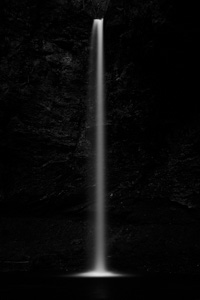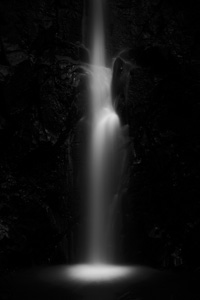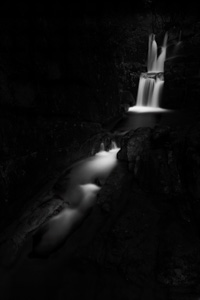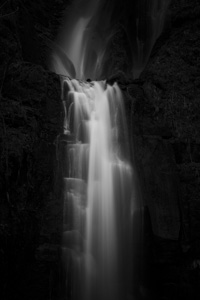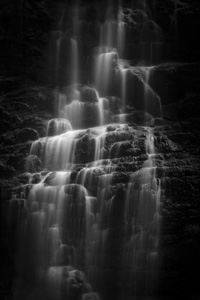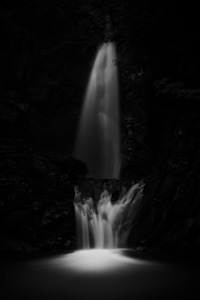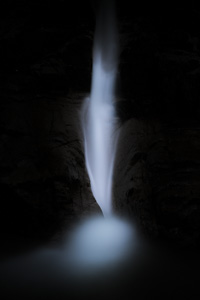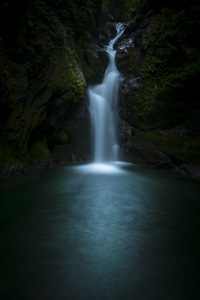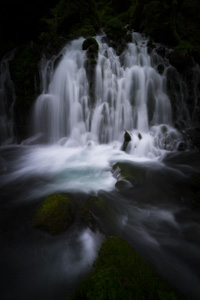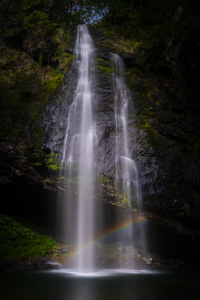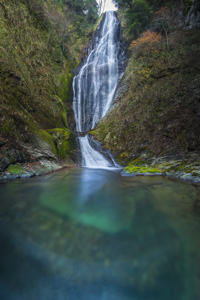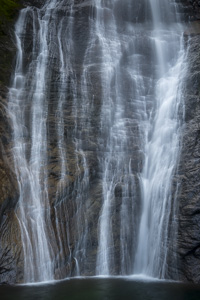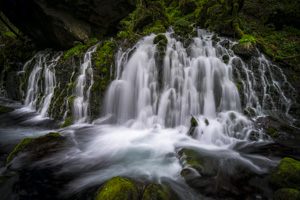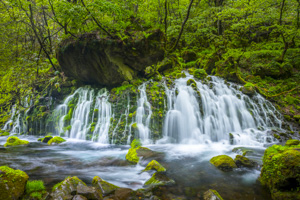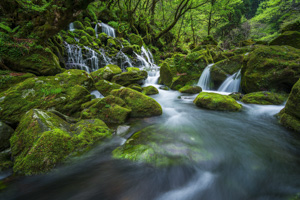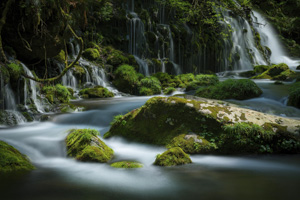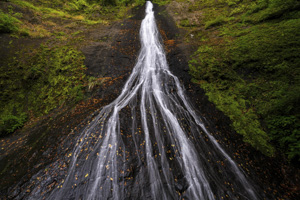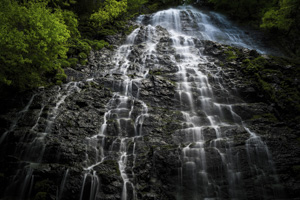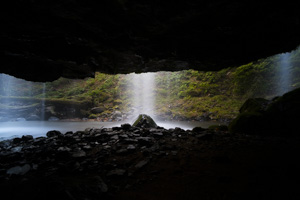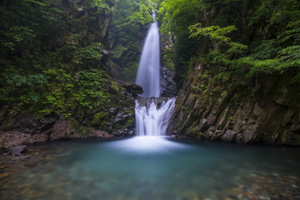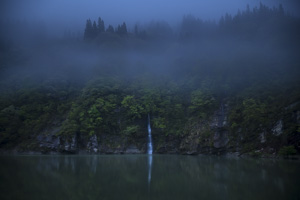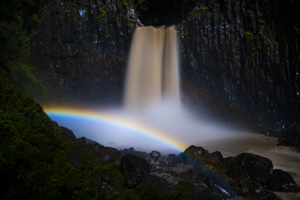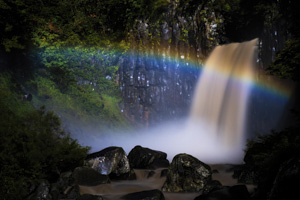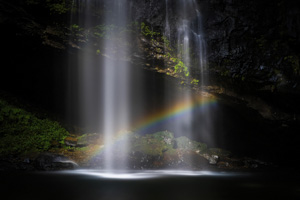Waterfalls
Japan is a long and narrow island nation, and thanks to its complex topography, there are waterfalls everywhere. Among all natural structures, the powerful flow of water from waterfalls evokes a sense of awe at the "magnificence of nature." Furthermore, waterfalls are located at the beginning of rivers, which are the source of life for all animals and plants, and the continuous flow of water symbolizes the ``flow of life'', which means the eternity of life.
Japan's traditional belief system, Shinto, has the idea of ``eight million gods,'' which believe that gods exist in everything in the natural world.For the reasons mentioned above, waterfalls themselves are worshiped as gods. It is considered a sacred place where God resides. For believers, the clear water and powerful flow symbolize purification of the body and mind and acceptance of sacred power, and sacred rituals such as ``takigyo'', where people bathe in the waterfall's water, are performed.
Waterfalls are full of ``majesty'' and ``power'' as well as ``beauty'' that stimulates the unique Japanese aesthetic sense, such as ``impermanence'' and ``mono no aware'', and have been often depicted in Japanese paintings since ancient times.
When facing a waterfall, you may feel a sense of ``silence''. The roar of the waterfall is likely to drown out other sounds such as insects and wind. Also, if you visit the waterfall at night, you will only be able to see the flow of water in the darkness. This is because when the water falls, it turns into white foam that shines brightly under the starlight. The contrast between the light and the background becomes even greater with long exposure, but the scene sometimes begins to look like a human figure. I am fascinated by this waterfall, which gives me a sense of ``tranquility,'' ``Wabi,'' and ``Yuuuuuuuuuu.'' This also expresses "minimalism", which is one of the themes of modern art.
日本は細長い島国で、その複雑な地形のおかげで至る所に滝があります。自然の造形物の中でも特に動きの有る滝の水の流れの力強さは「自然の偉大さ」に対する畏敬の念を呼び起こします。また滝はあらゆる動植物の命の源である川の始まりに位置し、水が流れ続けることで生命の永遠性を意味する「生々流転」を象徴しています。
日本の伝統的な信仰体系である「神道」では自然界のあらゆるものに神が存在するとする「八百万の神」という考え方がありますが、上記の理由などから、滝自体を神と崇めたり、神のいる神聖な場所とされています。そして、その清らかな水や力強い流れは、信仰者にとって身体と心の浄化や神聖な力の受容を象徴し、滝の水を浴びる「滝行」や神聖な儀式が行われます。
滝には「雄大」「力強さ」と共に「無常」「もののあはれ」など日本人独特の美意識を刺激する「美」も詰まっていて、古来より日本画にも多く描かれています。
滝に対峙していると「静寂」を感じる事があります。滝の轟音は虫の音や風の音などの他の音を消し去る為でしょう。また夜に滝を訪れると暗闇の中に水の流れだけが見えてきます。水が滝を落ちる際に白い泡となって星明かりで明るく光るためです。その光と背景との明暗差は長時間の露光で更に大きくなりますが、その光景は時に人の姿に見えてきます。私はこの「静寂」と「侘び」「幽玄」を感じる滝に魅了され「水の肖像」として作品を撮っています。これは現代芸術のテーマの一つである「ミニマリズム」を表現するものでもあります。

